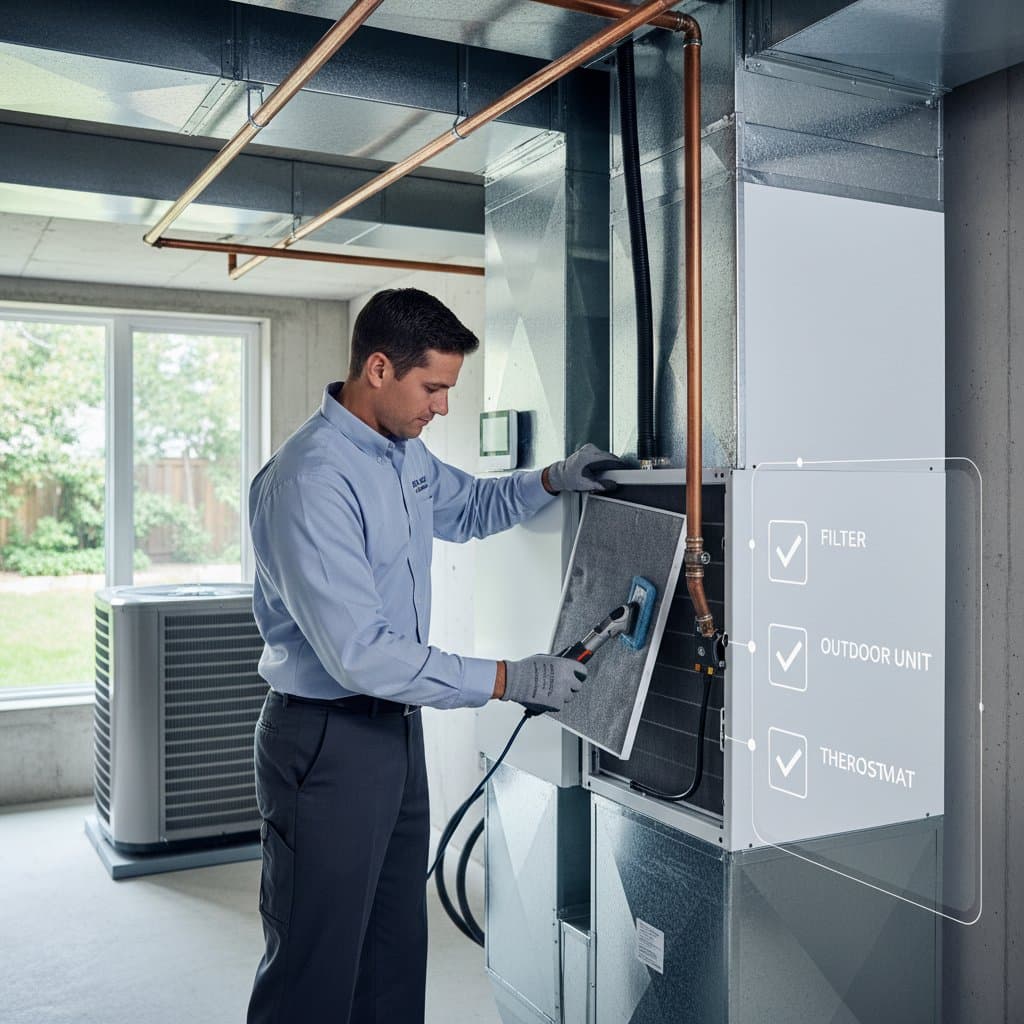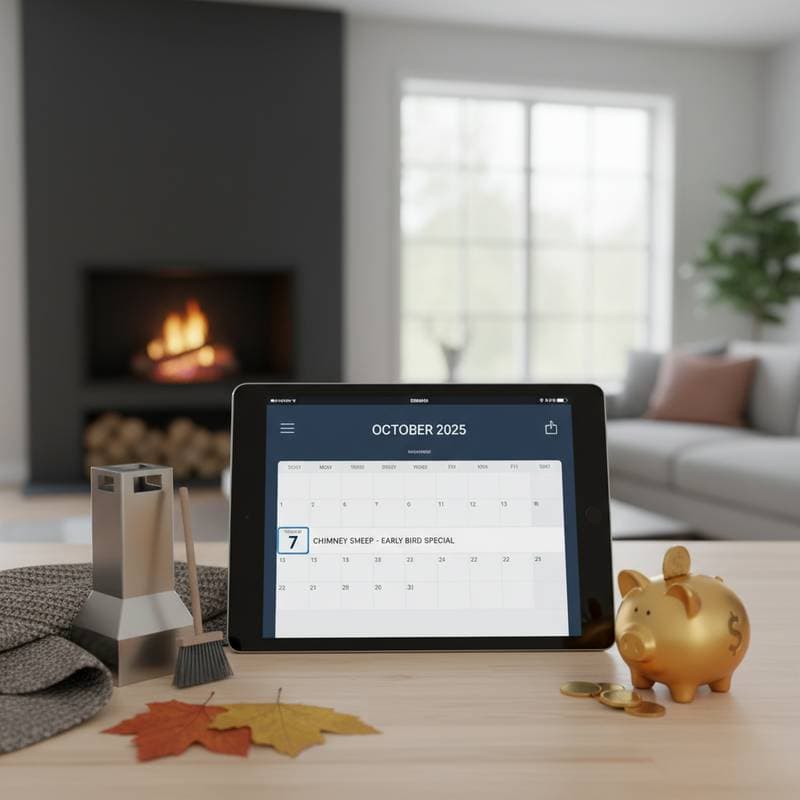Why a September HVAC Tune-Up Prevents Winter Breakdowns
As temperatures cool, the comfort of your home hinges on a dependable heating system. Numerous homeowners delay testing their furnace or heat pump until the initial cold front, only to discover startup difficulties or total failure. A September HVAC tune-up averts this situation by enabling efficient operation, minimizing repair expenses, and guaranteeing warmth precisely when required.
Understanding the Value of Seasonal HVAC Maintenance
HVAC systems endure with regular attention, yet they demand ongoing upkeep. Filters clog, belts degrade, and electrical elements loosen gradually. These minor concerns frequently escape notice until they trigger significant malfunctions. An expert tune-up during early fall allows technicians to examine, cleanse, and adjust the system prior to its intense winter demands.
Homeowners who arrange yearly maintenance experience reduced mid-season disruptions and decreased utility expenses. Dust accumulation, limited airflow, and suboptimal combustion efficiency lead to energy loss and accelerated deterioration. Resolving these elements promptly sustains optimal functionality.
Key Steps in a September HVAC Tune-Up
A comprehensive tune-up extends well past a mere filter swap. It encompasses a meticulous review of the full heating and cooling setup. The following outlines standard professional procedures:
-
Filter replacement and airflow inspection
Technicians assess filter dimensions, substitute as necessary, and evaluate airflow to confirm adequate distribution. Clogged filters compel the system to labor excessively, elevating energy consumption and curtailing lifespan. -
Blower and motor cleaning
Accumulated dust and particles within the blower can induce vibrations and inconsistent heating. Thorough cleaning promotes seamless performance and even air dispersal across your residence. -
Electrical component check
Frayed wiring, deteriorated contacts, and defective capacitors may result in sporadic power supply or outright cessation. Inspection and securing of these elements mitigate electrical risks and operational halts. -
Thermostat calibration
Inaccurate thermostat readings prompt excessive or insufficient cycling. Precise calibration delivers exact temperature control and steady comfort levels. -
Combustion and safety system testing
In gas furnaces, specialists scrutinize the burner, ignition mechanism, and flame sensor. They also examine the heat exchanger for fissures that might release carbon monoxide. Such evaluations are crucial for averting hazardous conditions. -
Lubrication and mechanical checks
Components like bearings and fan motors require suitable lubrication. Absence of it heightens friction, producing noise, reducing efficiency, and hastening degradation.
These procedures collectively foster a more secure and fluid heating period. Neglecting them permits minor faults to escalate into substantial, pricier dilemmas.
Why September Is the Ideal Month for an HVAC Tune-Up
Opting for a September appointment yields multiple benefits. Service providers face lighter schedules compared to the post-chill frenzy, facilitating prompt and flexible bookings. Technicians possess ample opportunity to procure needed replacement parts upon detecting wear or damage. Consequently, your system stands fully primed before the inaugural frosty evening.
Industry standards advocate annual HVAC servicing. Fall timing verifies that furnace and air conditioning elements receive post-summer evaluation. This forward-thinking approach sidesteps the winter surge in urgent calls and limited slots.
Preventing Winter Breakdowns Through Early Detection
The majority of winter HVAC issues originate from overlooked minor defects. A slack belt could emit a whine in October before rupturing in January. A soiled flame sensor might initiate erratic cycling, culminating in shutdown amid peak cold. September identification and remediation eliminate the inconvenience, financial burden, and anxiety of urgent fixes.
Experts indicate that preseason upkeep diminishes breakdown probabilities by up to 85 percent. This figure underscores the ease of rectifying issues at their inception. Early intervention not only conserves funds but also prolongs equipment durability.
DIY Maintenance Homeowners Can Handle
Although expert service remains indispensable, residents can bolster their system via basic interim actions. These efforts yield noticeable improvements:
- Change filters every one to three months to enhance airflow and lessen blower motor stress.
- Ensure vents remain unobstructed by furniture, drapes, or carpets to facilitate unrestricted circulation.
- Clear debris such as leaves and branches from outdoor units in heat pump setups to preserve airflow.
- Monitor for atypical sounds like squeaks, rattles, or grinds, which suggest loose components or wear.
- Confirm thermostat configurations align with your comfort preferences and daily routines.
These measures complement rather than substitute professional care, aiding efficiency in the intervals.
Comparing DIY and Professional HVAC Care
DIY efforts maintain cleanliness and attentiveness, yet expert intervention supplies unmatched diagnostic accuracy and safety verification. Professionals employ specialized instruments including combustion analyzers, voltage meters, and pressure indicators. They analyze data to determine fuel burn efficiency or refrigerant adequacy, tasks that untrained attempts could damage or endanger.
Engaging certified technicians safeguards warranty terms as well. Producers often mandate recorded maintenance for claim validity. Overlooking professional inspections could invalidate coverage, imposing full repair liability.
Cost and Energy Savings from Regular Tune-Ups
Some residents view maintenance as superfluous outlay. In truth, tune-ups recoup costs via efficiency gains and averted repairs. A pristine, tuned system consumes reduced fuel or power. Proper care boosts efficiency by ten to fifteen percent, trimming seasonal bills and easing operational load.
Early detection slashes repair expenditures too. Addressing a faulty capacitor proves far less costly than overhauling a seized blower motor. Proactive steps shield both livability and finances.
Building Long-Term System Reliability
Your HVAC represents a key home investment. Consistent upkeep upholds its worth and steadfastness. A September tune-up transcends mere winter readiness; it sustains year-round proficiency. Activate your furnace assuredly at the season's onset, confident in its thorough preparation.
For enduring comfort, prioritize routine over isolated efforts. Set reminders for early fall annually, integrating the tune-up into your home care cycle.





